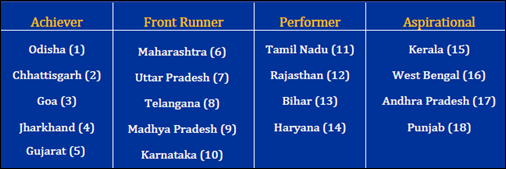7667766266
enquiry@shankarias.in
Prelims – Economic and Social Development.
Mains (GS II & III) – GS I (Government Policies & Interventions NITI Aayog) |GS III (Inclusive Growth Growth & Development)
Niti Aayog’s Fiscal Health Index (FHI) 2025 has ranked Odisha as the top-performing state in terms of fiscal stability.
Key Findings


|
Quick Facts |
|